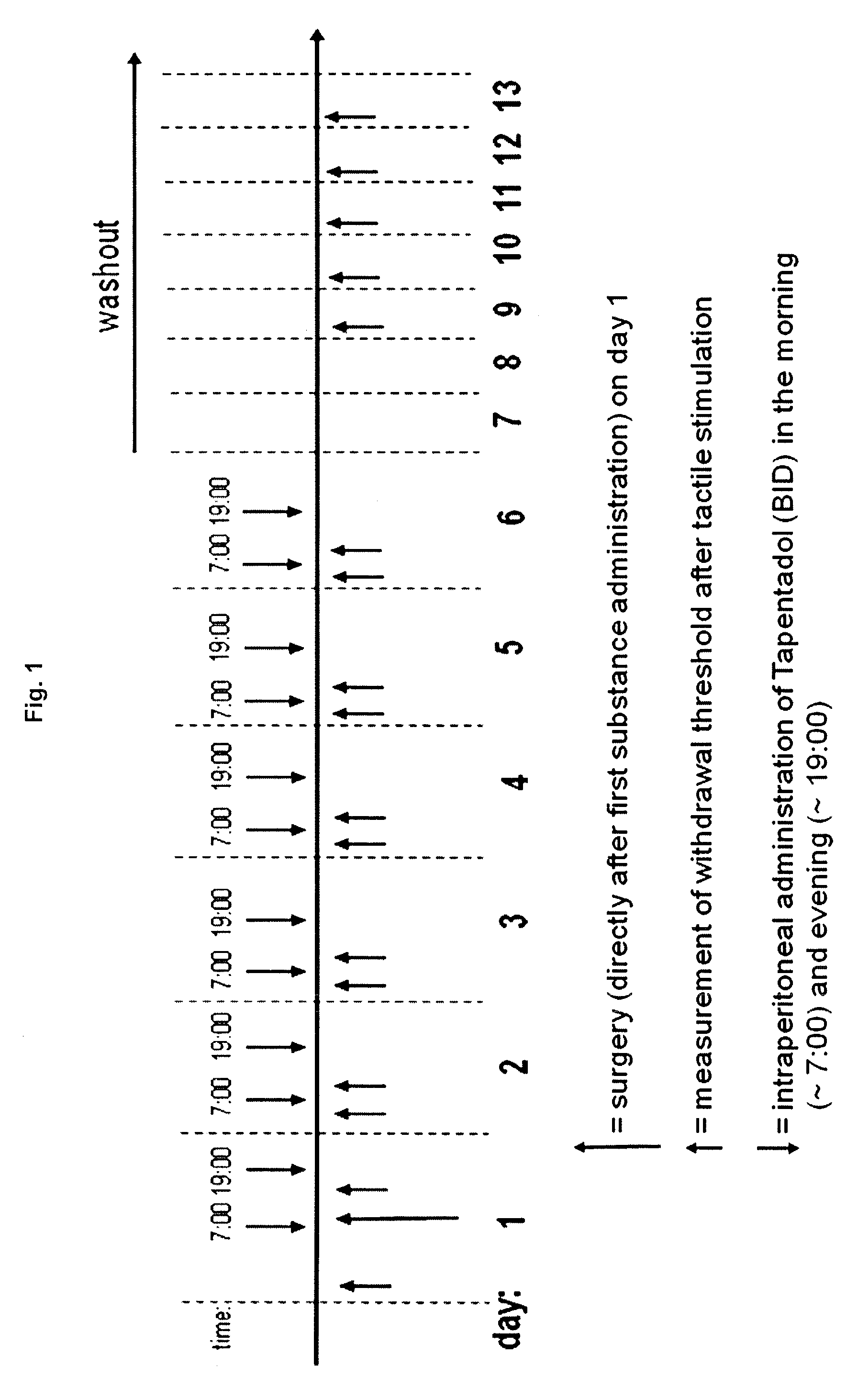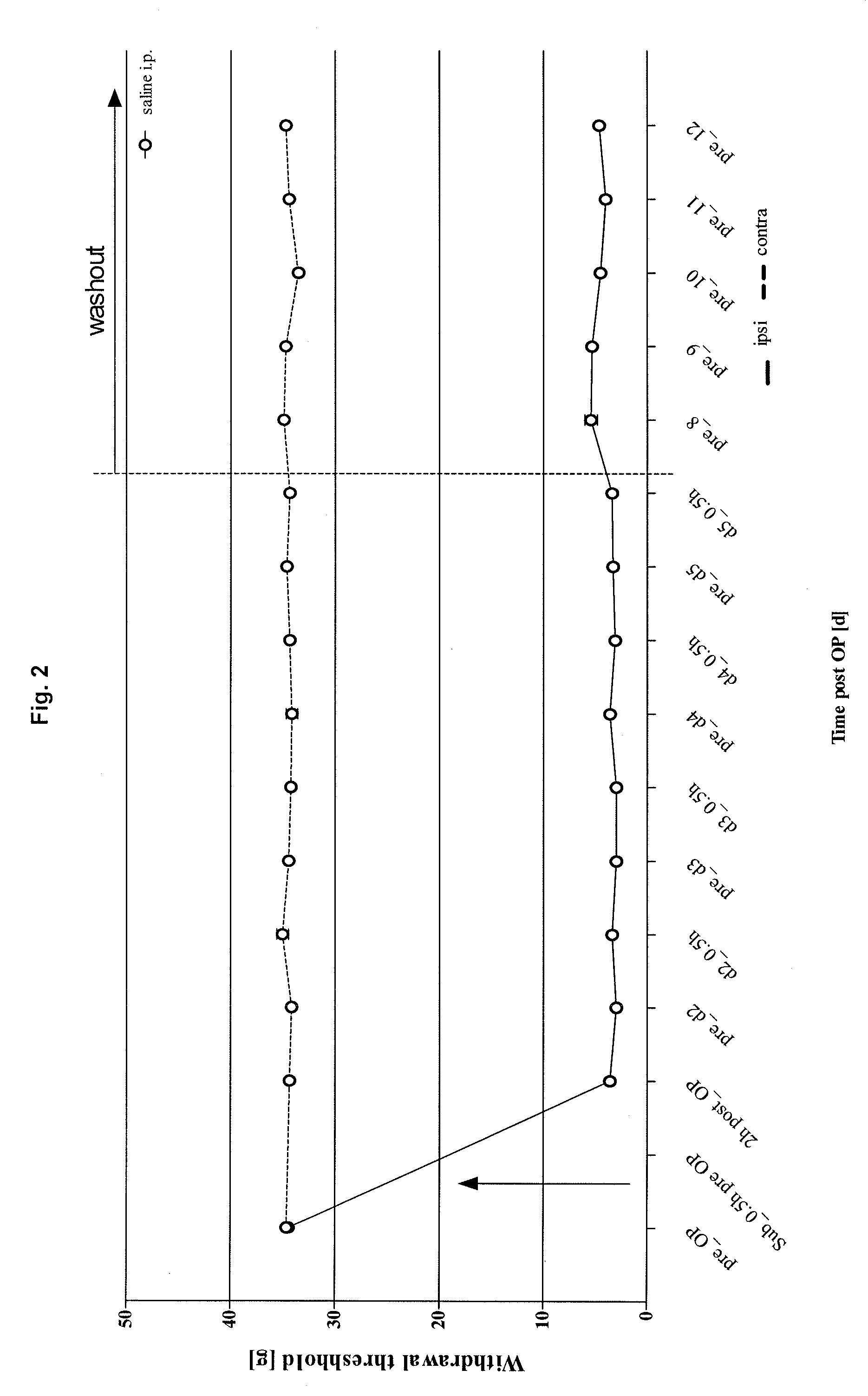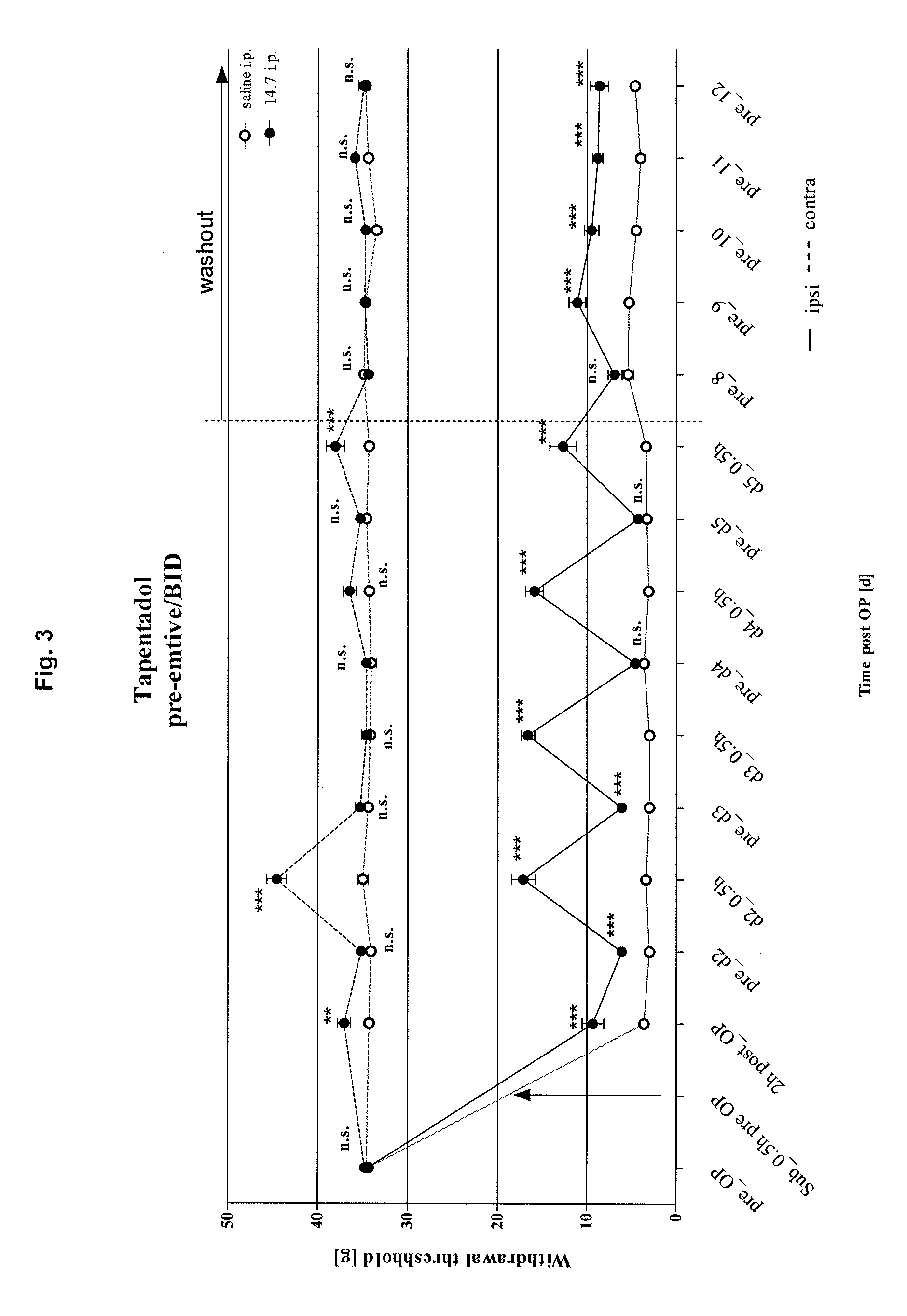Method of Inhibiting Chronification of Pain
a technology of chronification and pain, applied in the field of tapentadol, can solve the problems of confusion of evidence for the effect of different anaesthesiology and analgesic regimens on chronic pain after surgery, prolonging pain sensation, and reducing pain in patients, so as to reduce neuropathic pain and facilitate the treatment and inhibition of migrain
- Summary
- Abstract
- Description
- Claims
- Application Information
AI Technical Summary
Benefits of technology
Problems solved by technology
Method used
Image
Examples
example 1
Paw Incision Model for Postoperative Pain
[0111]Post operative, incisional pain is a common form of persistent, acute pain. Brennan et al. (Brennan T J, Vandermeulen E P, and Gebhart G F. Characterization of a rat model of incisional pain. Pain 1996; 64:493-501) developed a post operative model in rats with surgical intervention on the plantar surface of the hind foot for the evaluation of novel analgesic therapeutics. A surgical incision of the rat foot causes a reliable and quantifiable tactile hypersensitivity during the initial post operative period and lasting for several days after surgery. This model may thus be useful for predicting analgesia by investigational agents for post operative pain.
[0112]The experiments were carried out in male albino rats (Sprague Dawley) with 170 g-230 g body weight from a commercial breeder (Charles River, Germany). Surgery was performed as previously described. Brennan et al. (Brennan T J, Vandermeulen E P, and Gebhart G F. Characterization of a...
example 2
Respective Effects of Tapentadol on Mechanical Allodynia / Hyperalgesia in Rats with Ligatures of the Infraorbital Nerve Versus the Sciatic Nerve
Methods
[0120]Male Sprague-Dawley rats (Charles River Laboratories, L′Arbresle, France), weighing 150-200 g on arrival, were used. Animals were maintained under controlled environmental conditions (22±1° C., 60% relative humidity, 12 h / 12 h light / dark cycle, food and water ad libitum) starting from reception in the laboratory, for at least 1 week before any intervention or treatment and thereafter, until euthanasia.
Chronic Constriction Injury to the Infraorbital Nerve (CCI-ION)
[0121]Rats were anaesthetized with sodium pentobarbital (50 mg / kg i.p.). Unilateral CCI-ION was performed under direct visual control using a Zeiss microscope (10-25×). Briefly, the head was fixed in a Horsley-Clarke stereotaxic frame and a midline scalp incision was made, exposing skull and nasal bone. The edge of the orbit, formed by the maxillary, frontal, lacrimal, a...
PUM
| Property | Measurement | Unit |
|---|---|---|
| viscosity | aaaaa | aaaaa |
| viscosity | aaaaa | aaaaa |
| viscosity | aaaaa | aaaaa |
Abstract
Description
Claims
Application Information
 Login to View More
Login to View More - R&D
- Intellectual Property
- Life Sciences
- Materials
- Tech Scout
- Unparalleled Data Quality
- Higher Quality Content
- 60% Fewer Hallucinations
Browse by: Latest US Patents, China's latest patents, Technical Efficacy Thesaurus, Application Domain, Technology Topic, Popular Technical Reports.
© 2025 PatSnap. All rights reserved.Legal|Privacy policy|Modern Slavery Act Transparency Statement|Sitemap|About US| Contact US: help@patsnap.com



